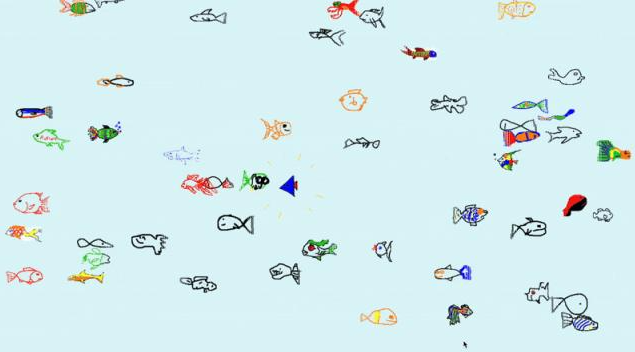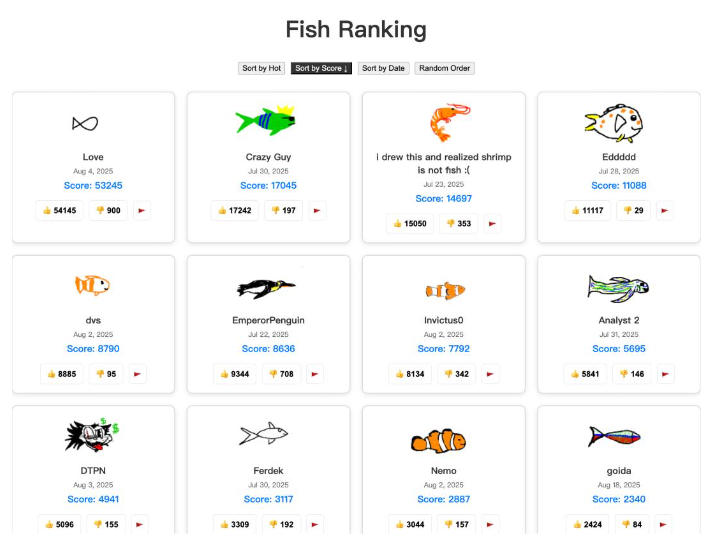A global "fish-keeping" craze is spreading wildly on the internet! A simple AI game called "Draw A Fish" has suddenly gone viral, with millions of netizens getting addicted to drawing fish in a magical world. This seemingly simple idea has revived the amazing charm that once made "Flappy Bird" a global sensation.
The magic of the game lies in its ultra-simple experience. Users just need to doodle a small fish on the web canvas, and the AI will instantly perform the "turning stones into gold" magic, transforming the static doodle into a lively little fish swimming freely in a virtual aquarium. This instant transformation from creation to "birth of life" brings an unprecedented sense of creative satisfaction.
The operation process is incredibly smooth. After opening the website, users are presented with a simple drawing tool equipped with multiple color brushes. As the doodle gradually takes shape, the AI will assess the "fish likeness" in real time. Once the similarity reaches 60%, a magical threshold, users just need to click the "make it swim" button and name their fish, which will then immediately jump into the shared digital ocean, swimming alongside other fish from around the world.

What makes the game so addictive is its social interaction mechanism. Players can not only appreciate their own creations but also like or "downvote" other users' works. This simple interaction instantly transforms individual creations into a global art event, making everyone a curator of this virtual aquarium.
The success of "Draw A Fish" is no accident, but rather the perfect combination of multiple factors. First, it offers an accessible experience with zero barriers to entry—no registration or login required, no complex operations to learn. Anyone can start creating in just a few seconds. Second, the real-time feedback system provided by AI gives users dynamic hints about the "fish probability," making every doodle full of anticipation. Even those who aren't skilled at drawing can experience a sense of achievement through continuous attempts.

The technical strength behind the game is equally impressive. The development team used a convolutional neural network based on the PyTorch framework and cleverly integrated the training results from Google's QuickDraw dataset. This advanced algorithm can accurately identify "fish features" in user doodles and provide real-time scoring feedback, hiding the complexity of technology behind a simple and enjoyable interactive experience.

Cultivating a community atmosphere is the finishing touch of this game. When thousands of players' creative works gather in the same digital aquarium, it becomes more than just a game space—it turns into a creative exhibition area filled with imagination. Ranking systems and like functions spark users' competitive spirit and desire for expression, allowing each participant to find a sense of belonging in this global creative community.
The phenomenon-level success of "Draw A Fish" proves a simple truth: the best technological applications are often not the most complex, but the ones that touch people's hearts the most. When AI technology perfectly combines with human creativity, even drawing a simple little fish can release endless charm. Perhaps this is the purest joy of the digital age—creating the most real surprises with the simplest means.

